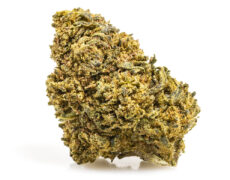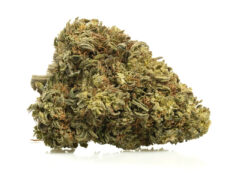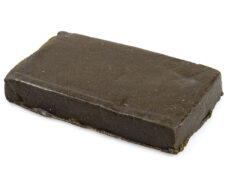Modified on: 20/03/2024
THESE ARE THE FIVE CANNABIS PLANT-LOOKALIKES THAT YOU (PERHAPS) DON’T KNOW
If you have decided to open this article, it is because you would also like to know which are the plants that look like weed plants.
In this article, we will see what they are and how to distinguish them correctly.
Enjoy reading on our Justbob‘s blog!
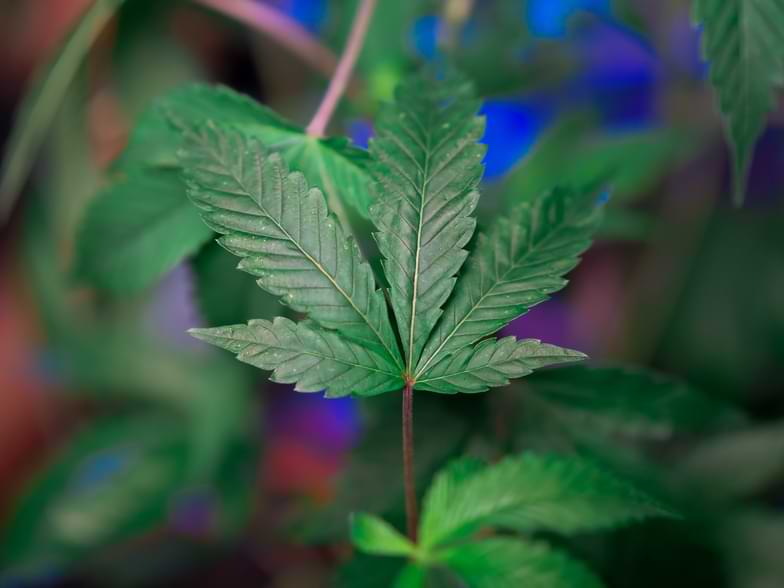

1. Japanese Maple (Acer Palmatum)
In the world of botany, plants often exhibit remarkable similarities despite belonging to different species. One such intriguing case is the resemblance between the Japanese maple tree (Acer palmatum) and (CBD) cannabis plants. While these two plants belong to distinct botanical families and serve different purposes, their visual likeness has sparked curiosity among gardeners and enthusiasts alike.
Japanese maple, renowned for its exquisite foliage and ornamental value, shares several characteristics with cannabis plants, particularly in terms of leaf shape and structure. The leaves of the Japanese maple are palmate, meaning they radiate from a central point resembling the shape of an open hand. Similarly, cannabis leaves, especially those of the sativa variety, can also have a palmate appearance, though with serrated edges and typically with a greater number of leaflets.
One of the key resemblances lies in the serrated leaf margins shared by both Japanese maple and cannabis plants. This feature, along with the overall shape of the leaves, contributes to the visual similarity between the two species. Additionally, both plants may exhibit variations in leaf color, ranging from vibrant green to shades of red and purple, adding to the confusion for those unfamiliar with their distinct characteristics.
Moreover, during the vegetative stage of growth, Japanese maple trees can bear a striking resemblance to a few plants, especially young medium-sized cannabis plants. The woody stem and branching pattern of the Japanese maple may mimic those of actual cannabis plants, further blurring the lines of distinction between the two.
Despite these similarities, it’s essential to note the distinguishing features that set Japanese maple apart from cannabis plants. Unlike cannabis sativa, Japanese maple trees do not produce buds or flowers commonly associated with marijuana plants. Instead, they are valued for their aesthetic appeal and are commonly grown in gardens and landscapes for ornamental purposes.
Furthermore, Japanese maple trees thrive in well-draining soil and prefer rich, fertile conditions, contrasting with the preferences of cannabis plants, which may grow in a wider range of soil types but often require specific conditions for optimal cultivation. Additionally, Japanese maple trees are not associated with any culinary or medicinal uses attributed to cannabis plants.
That being said, while Japanese maple and cannabis plants may share certain visual resemblances, they belong to distinct botanical families and serve different roles in horticulture. Understanding these similarities and differences enhances our appreciation for the diversity of a flowering plant life and underscores the importance of accurate plant identification. Whether adorning gardens with their elegant foliage or cultivated for their therapeutic properties, both Japanese maple and cannabis plants contribute to the rich tapestry of flora that surrounds us.
Also read:Can cannabis cause tachycardia? Let’s hear what science says
2. Southern Marigold (Tagetes Minuta)
Sometimes, plants can confuse even seasoned gardeners: two such plants, the cannabis and Southern Marigold (Tagetes minuta), share certain features while also possessing distinct characteristics. Let’s delve into the resemblances and differences between these intriguing botanical specimens.
Resemblances:
- Leaf Shape and Structure: Both cannabis and Southern Marigold plants boast palm-shaped leaves, although their details differ. Cannabis leaves typically have serrated edges and may feature a greater number of leaflets, while Southern Marigold leaves are typically larger and more deeply lobed.
- Flowering Plants: Both species are flowering plants, with Southern Marigold producing bright yellow flowers and cannabis plants exhibiting variations in flower color, including yellow, purple, and green hues depending on the strain.
- Vegetative Stage Appearance: During their early growth stages, medium-sized cannabis plants can bear a resemblance to Southern Marigold due to their woody stems and branching patterns. This similarity may lead to confusion, especially for novice gardeners.
Contrasts:
- Culinary and Medicinal Uses: While cannabis is renowned for its diverse applications in both culinary and medicinal fields, Southern Marigold is primarily grown for ornamental purposes and is not utilized for culinary or medicinal use.
- Flower Color and Appearance: Southern Marigold produces bright pink flowers, which stand in stark contrast to the yellow, purple, or green flowers of cannabis plants. This difference in flower color serves as a clear distinguishing feature between the two species.
- Cultivation Requirements: Cannabis plants thrive in well-draining soil with specific nutrient requirements, while Southern Marigold can tolerate a wider range of soil types and conditions. Additionally, cannabis plants often require precise environmental controls during cultivation, whereas Southern Marigold is more resilient and adaptable to various growing conditions.
- Botanical Families: Cannabis belongs to the Cannabaceae family, while Southern Marigold belongs to the Asteraceae family. This taxonomical distinction reflects their evolutionary relationships and further sets them apart despite their visual similarities.
3. Sunn Hemp (Crotalaria Juncea)
Exploring the botanical world, similarities between different plant species often captivate the curiosity of enthusiasts and gardeners. One such intriguing case is the resemblance between Sunn Hemp (Crotalaria juncea) and cannabis plants. Despite belonging to distinct botanical families and serving different purposes, these plants share certain visual characteristics that may lead to confusion among observers.
Sunn Hemp, native to tropical and subtropical regions, is primarily cultivated as a green manure crop and for its fiber. Its appearance during the vegetative stage bears a striking resemblance to cannabis plants, particularly medium-sized cannabis plants. The woody stem and palm-shaped leaves of Sunn Hemp may easily be mistaken for those of actual cannabis plants, especially by those unfamiliar with both species.
One notable similarity lies in the leaf shape and structure. Sunn Hemp leaves, like those of cannabis plants, may exhibit palmate or compound leaf arrangements with serrated leaf margins. This feature, coupled with the overall appearance of the plants, contributes to the confusion between the two species. Additionally, both Sunn Hemp and cannabis plants may produce bright yellow flowers, further blurring the lines of distinction.
However, despite these visual similarities, there are significant differences between Sunn Hemp and cannabis plants. Unlike cannabis sativa, Sunn Hemp does not produce buds or flowers commonly associated with marijuana plants. Instead, it is valued for its role as a green manure crop, enriching soil fertility and suppressing weeds in agricultural settings.
Furthermore, Sunn Hemp thrives in well-draining soil and requires warm temperatures for optimal growth, making it a staple in tropical and subtropical gardens. In contrast, cannabis plants have specific requirements for cultivation, often necessitating controlled environments and careful management.
It’s essential to highlight these differences to avoid confusion, especially in regions where cannabis cultivation is regulated or prohibited. While Sunn Hemp may resemble cannabis plants during certain stages of growth, a closer examination reveals their distinct characteristics and purposes in horticulture.
Sunn Hemp serves as a prime example of a plant that shares visual similarities with cannabis plants but belongs to a different botanical family and serves a different function. Understanding these distinctions enhances our appreciation for the diversity of flora and underscores the importance of accurate plant identification in botanical exploration and agricultural practices.
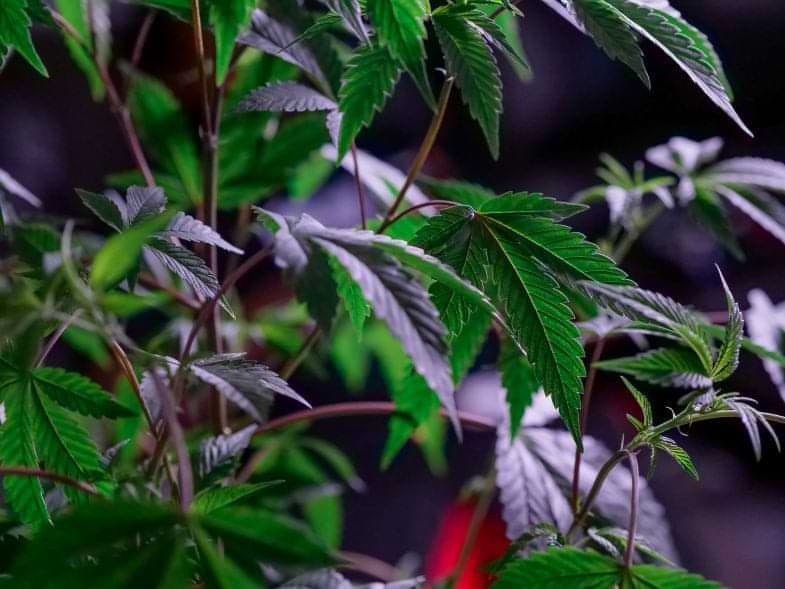

4. Coral Plant (Jatropha Multifida)
In the world of plants, nature often presents us with intriguing resemblances between seemingly unrelated species. One such comparison can be drawn between the cannabis plant and the coral plant (Jatropha multifida). While belonging to different botanical families and serving distinct purposes, these two plants share several striking similarities that merit exploration.
Coral plants, native to tropical regions, are renowned for their vibrant appearance and unique foliage. Despite not being related to the cannabis family, they exhibit features that may evoke thoughts of cannabis plants and CBD Flowers, particularly to the untrained eye. One of the most notable similarities lies in the leaf shape and structure. Both cannabis and coral plants can have palmate leaves, characterized by multiple lobes radiating from a central point, resembling the shape of a hand. Additionally, the serrated leaf margins found in both species further contribute to their visual likeness.
Furthermore, coral plants, like cannabis, produce flowers with bright yellow hues. While cannabis flowers are more commonly associated with shades of green and purple, certain varieties may display yellow tones, further adding to the confusion between the two plants. The presence of small yellow flowers in coral plants may lead observers to mistake them for cannabis, especially when considering their shared tropical habitat.
Another aspect that adds to the similarity is the woody stem characteristic of both cannabis and coral plants. While cannabis plants are known for their sturdy stems that support the growth of buds and flowers, coral plants possess similarly robust structures to support their foliage and flowers. This shared trait may contribute to the misconception of coral plants as cannabis-like plants, particularly when viewed from a distance.
Despite these visual resemblances, it’s crucial to acknowledge the significant differences between cannabis and coral plants. Unlike cannabis, which is cultivated for its medicinal and recreational uses, coral plants are valued for their ornamental appeal and are commonly grown in tropical gardens as decorative accents. Additionally, while cannabis has serrated leaf margins, coral plants often have deeply lobed leaves with serrations along the edges.
Moreover, coral plants are not associated with the psychoactive properties attributed to cannabis. Instead, they are cultivated for their aesthetic value and resilience in tropical landscapes. Understanding these distinctions is essential to prevent misidentification and to appreciate the unique characteristics of each plant species.
Also Read: Live Resin Cannabis Concentrate: What Is It Really About?
5. Okra (Abelmoschus Esculentus)
Another intriguing comparison can be made between Okra (Abelmoschus esculentus) and cannabis plants. While these two plants serve different purposes and are cultivated for distinct reasons, they share several noteworthy similarities worth exploring.
Both Okra and cannabis plants have distinctive foliage that can lead to confusion, especially for those unfamiliar with their characteristics. The leaves of Okra plants, much like cannabis leaves, are palmate with serrated edges. This similarity in leaf shape and structure is one of the primary reasons why Okra plants are often mistaken for cannabis, particularly during the early stages of growth.
Furthermore, both Okra and cannabis plants produce flowers, albeit with different colors and appearances. While cannabis plants are known for their small, inconspicuous flowers that eventually develop into buds, Okra plants produce showy yellow flowers that bloom throughout the growing season. However, the presence of flowers on both plants may contribute to the misconception that they are related or similar in nature.
Additionally, Okra plants and cannabis plants share certain growth characteristics. Both species thrive in warm climates and fertile soil, although they may have specific preferences regarding soil composition and nutrient levels. Okra plants, like cannabis, also benefit from regular watering and ample sunlight during the growing season to achieve optimal growth.
Despite these similarities, it’s essential to recognize the key differences between Okra and cannabis plants. While cannabis plants are primarily cultivated for their psychoactive properties or medicinal benefits, Okra plants are grown for culinary purposes. The edible pods of Okra are prized for their taste and nutritional value, making them a staple ingredient in various cuisines around the world.
Furthermore, Okra plants do not produce the resinous buds associated with cannabis plants, nor do they contain cannabinoids (CBD) or THC, the psychoactive compound found in marijuana. This crucial distinction underscores the diverse uses and applications of these two plant species.
Okra and cannabis plants may share certain visual similarities and growth habits, they are distinct botanical entities with unique characteristics and purposes. By understanding these similarities and differences, we can appreciate the rich diversity of plant life and the valuable contributions that each species makes to agriculture, horticulture, and human well-being.
Conclusions
In this article, we have analyzed which are the five plants similar to cannabis and some ways to differentiate them, although there are many more that we did not mention, but resemble cannabis plants, such as the spider flower or the kenaf plants.
So, if you are looking for quality marijuana products, visit Justbob, the leading e-commerce in the sector that offers safe and legal products, such as legal hash.
We are waiting for you at Justbob, see you soon!


